There are educators everywhere working to teach the next generation of sustainability minded students. Whether in formal settings (K-12, undergraduate, graduate) settings or informally as science communication now it is more important than ever to work towards advancing Conservation Tech education.
The United Nations released the 17 Sustainable Development Goals (SDGs) which have served as a framework for educators in this space. Educating with a sustainable focus is a challenge whether you are interested in engineering, public policy, AI, or behavioral biology and we hope that this group will help you grow and exchange your ideas with other current and future educators.
This WILDLABS group has been set up by folks who are working to develop education toolkits, platforms, modules, and more in the conservation space. These tools can be at any level of development.
We hope you will become part of this group to share case studies, exchange ideas, and work towards developing a curriculum for future conservation tool crafters.
Current Examples of Conservation Tech Education Resources:
CV4Ecology Summer Workshop:
- Website for Summer Camp Information,
- Applications Due December 15th for next cohort
- 2022 Material including Syllabus, Lectures, Invited Talks, Final Presentations
Tech Tutors from WILDLABS
- TechTutors Season 1, WILDLABS
- TechTutors Season 2, WILDLABS
- TechTutors Season 3, WILDLABS
Want to know more about Conservation Technology education resources? Make sure to join the conversation in the WILDLABS Conservation Tech Training and Education group.
Additional Conservation Tech Courses:
- Tech4Wildlife @ Georgia Tech – Interdisciplinary and Project Based course on Conservation Technology
- MSc Wildlife Conservation Tech – Liverpool John Moores University Program
Group curators
- @StreamingScience
- | he/him/his
Georgia Institute of Technology
Andrew’s always looking to find new interdisciplinary teams in the conservation tech space. He is a postdoctoral researcher at Max Planck Institute, who completed his PhD at Georgia Tech in 2022. His interests including conservation tech education and engineering work.



- 0 Resources
- 14 Discussions
- 3 Groups
- @sstathat
- | she/her
Suzanne’s drive to protect the natural world led her to graduate school at Caltech. She is a Computing and Mathematical Sciences PhD student, advised by Pietro Perona. Her interests include leveraging machine learning and computer vision techniques to solve ecological problems.



- 0 Resources
- 3 Discussions
- 7 Groups
- @cshriver
- | she/her/hers
Georgia Institute of Technology
PhD student in Quantitative Biosciences

- 0 Resources
- 0 Discussions
- 3 Groups
- @Nycticebus_scientia
- | he/they
MammalWeb.org
Co-founded citizen science camera-trapping project with interest in developing 100% open source wildlife tech. Advocate for open science/open research. Community member of the Gathering for Open Science Hardware.


- 0 Resources
- 16 Discussions
- 3 Groups
Holder of BSc in Applied Zoology. Ecologist at Ruaha National park


- 0 Resources
- 5 Discussions
- 12 Groups
- @karinnacvijanovich
- | she/her
- 0 Resources
- 0 Discussions
- 7 Groups
WILDLABS & Wildlife Conservation Society (WCS)
I'm the Bioacoustics Research Analyst at WILDLABS. I'm a marine biologist with particular interest in the acoustics behavior of cetaceans. I'm also a backend web developer, hoping to use technology to improve wildlife conservation efforts.





- 8 Resources
- 14 Discussions
- 32 Groups
Fauna & Flora
Remote Sensing Scientist working at Fauna & Flora



- 6 Resources
- 3 Discussions
- 6 Groups
Sustainability Manager for CERES Tag LTD. An animal health company; animal monitoring, conservation, & anti-poaching/ rural crime. Wildlife, livestock, equine & companion. #CeresTrace #CeresWild #CeresRanch





- 2 Resources
- 20 Discussions
- 24 Groups
- @hjayanto
- | He/Him
KONKLUSI (Kolaborasi Inklusi Konservasi - Yayasan)
Your friendly Indo-Crocky-Croc



- 0 Resources
- 36 Discussions
- 17 Groups
Ms. Sarah Mshanga is a research assistant-trainee at the Women in Conservation Organization since August 2023. She holds BSc. in Wildlife Management from Sokoine University of Agriculture. She also interned at Lion Landscapes and GMERC Project.
- 8 Resources
- 36 Discussions
- 10 Groups
Msc student in wildlife management and conservation


- 0 Resources
- 1 Discussions
- 11 Groups
Neuroscientist & engineer looking for a data/R&D role in conservation.
- 0 Resources
- 0 Discussions
- 17 Groups
- @CathyNj
- | She
Catherine Njore is a seasoned Cartographer with over 18yrs experience and specializing in children cartography. She recently designed a Cartography: Fun with Maps Program(CFMP); a program that assists children to learn how to draw, read and use maps effectively.

- 1 Resources
- 36 Discussions
- 6 Groups
- @hyodopenguin
- | she/her
I am currently a rising junior at UC Berkeley studying data science. I hope to apply data with biodiversity, especially by utilizing camera traps for species classification. People in conservation tech are truly living my dream careers, and I can't wait to get even more inspired!

- 0 Resources
- 5 Discussions
- 23 Groups
Can conservation-based incentives promote the willingness of local communities to coexist with wildlife? A case of Burunge Wildlife Management Area, Northern Tanzania
10 July 2024
Manufacturing Partnership Brings Low-Cost Pipistrelle Family of Detectors to Researchers, Ecologists and Bat Enthusiasts Around the World
2 July 2024
Article
One of the most thrilling moments for any researcher is seeing their hard work published for the world to see. As part of the Women in Conservation Technology (WiCT) Kenya Cohort One, we not only learnt about the use of...
17 June 2024
I’m Ester Matingisa, conservationist with a demonstrated interest in bird ecology and I devoted a great deal of time to working on environmental and biodiversity conservation projects. I’m currently working with...
16 June 2024
WildLabs will soon launch a 'Funding and Finance' group. What would be your wish list for such a group? Would you be interested in co-managing or otherwise helping out?
5 June 2024
In 1987, sustainability was defined by the United Nations Brundtland Commission as “meeting the needs of the present without compromising the ability of future generations to meet their own needs.”In 1987,...
7 May 2024
Article
Read in detail about how to use The Inventory, our new living directory of conservation technology tools, organisations, and R&D projects.
1 May 2024
Article
The Inventory is your one-stop shop for conservation technology tools, organisations, and R&D projects. Start contributing to it now!
1 May 2024
Article
What better way to conclude InConversation Season 1: East Africa than by delving into the exciting yet complex world of #tech4wildlife innovation across the region. This episode is going to be double the insight and...
30 April 2024
The North Carolina Zoo seeks a dynamic, motivated and progressive individual to serve as the Associate Curator of International Conservation within the zoos’ Conservation, Education and Science (CES) program. The...
29 April 2024
Careers
The Smithsonian National Zoo & Conservation Biology Institute is seeking a Program Manager to help coordinate multiple organizations in an effort to integrate movement data & camera trap data with global...
22 April 2024
Watch our interview with pioneering young Tanzanian vulture researcher Vainess Laizer! Her research investigating the breeding success of white-backed vultures in the western corridor of the Serengeti ecosystem using...
16 April 2024
August 2024
September 2024
event
October 2024
November 2024
August 2024
event
6 Products
1 R&D Projects
10 Organisations
Recently updated products
Recently updated R&D Projects
Recently updated organisations
| Description | Activity | Replies | Groups | Updated |
|---|---|---|---|---|
| Thank you for your valuable insights. I, too, am eager to hear more from those actively working on this issue. |
|
Community Base, Conservation Tech Training and Education, Protected Area Management Tools | 5 days 2 hours ago | |
| In addition to the suggestions already listed, I'd recommend engaging with the SMART Community Forum: There are also many peer reviewed papers on the topic, for example:... |
|
Community Base, Conservation Tech Training and Education, East Africa Community, Software and Mobile Apps | 6 days 20 hours ago | |
| Hi,maybe this could be a candidate for a best practice guide 😉 My free manual 'Drones in Biomonitoring' - https://doi.org/10.5281/zenodo.8077113 It canhelp to get (more) knowledge... |
|
Conservation Tech Training and Education | 6 days 20 hours ago | |
| Karibu sana |
|
Acoustics, East Africa Community, Conservation Tech Training and Education | 1 week 2 days ago | |
| Very interesting please update us once experiment is successful |
|
Camera Traps, Conservation Tech Training and Education | 1 week 3 days ago | |
| Hi everyoneI have enjoyed attending the Variety Hour and learning about synthetic aperture radar (SAR) and the way it detect snares. This... |
|
Protected Area Management Tools, Community Base, Conservation Tech Training and Education, Ethics of Conservation Tech | 1 week 5 days ago | |
| very nice paper Cathy!!! |
+6
|
Climate Change, Community Base, East Africa Community, Conservation Tech Training and Education | 1 week 5 days ago | |
| so great!! |
|
Conservation Tech Training and Education | 2 weeks 1 day ago | |
| I will start by asking: What will the future of conservation be if all the incentives do not hit the jackpot????In recent years, we have... |
|
Conservation Tech Training and Education, East Africa Community, Human-Wildlife Conflict | 1 month ago | |
| It would be great to address data collection, handling and storage. It starts with keeping good records of field deployments so that devices can be refound and helps at the time... |
|
Community Base, Conservation Tech Training and Education, Early Career | 1 month 2 weeks ago | |
| In that case, you might want to keep an eye on the project from @Lars_Holst_Hansen |
|
Camera Traps, AI for Conservation, Conservation Tech Training and Education, Early Career, Human-Wildlife Conflict, Protected Area Management Tools | 2 months ago | |
| Congratulations! My first hydromoth was just arrived yesterday and so excited! Looking forward for the update from your project!!! |
|
Acoustics, Biologging, Climate Change, Conservation Tech Training and Education, Data management and processing tools, Emerging Tech, Open Source Solutions, Protected Area Management Tools, Sensors, Software and Mobile Apps | 3 months 2 weeks ago |
The need for specialized technology tools to enhance plant conservation
3 August 2024 8:31pm
11 August 2024 7:07am
Thank you for your valuable insights. I, too, am eager to hear more from those actively working on this issue.
Looking to understand SMART
31 July 2024 7:06pm
3 August 2024 3:34pm
Hello Loveness!!
SMART (Spatial Monitoring and Reporting Tool) is a comprehensive system used by conservation organizations and protected area managers to combat poaching and enhance law enforcement effectiveness. Here’s how SMART contributes to these efforts:
1. Data Collection and Management
Patrol Data: Rangers and patrol teams collect data using handheld devices, smartphones, or GPS units. This data includes:
- Locations of patrols
- Sightings of wildlife
- Evidence of illegal activities (e.g., snares, poached animals)
- Encounters with poachers
Centralized Database: All collected data is uploaded to a centralized database, allowing for systematic storage, retrieval, and analysis.
2. Monitoring and Analysis
Spatial Analysis: SMART uses GIS to analyze spatial data. This helps in identifying:
- Poaching hotspots
- Trends and patterns in illegal activities
- Areas requiring increased patrol efforts
Performance Metrics: The tool provides various performance metrics and key performance indicators (KPIs) to evaluate patrol effectiveness and coverage.
3. Real-time Reporting
Alerts and Notifications: SMART can be configured to send real-time alerts to managers and enforcement teams when illegal activities are detected, enabling rapid response.
Dashboard and Reports: Users can generate reports and visual dashboards summarizing patrol efforts, findings, and enforcement actions. These are crucial for informing management decisions and strategy adjustments.
4. Resource Allocation
Optimal Deployment: By identifying high-risk areas and times, SMART helps in the optimal allocation of patrol teams and resources. This ensures that efforts are focused where they are most needed.
Efficient Planning: The tool assists in planning patrol routes and schedules, maximizing coverage and reducing redundancy that is why it is known by training honest Rangers.
5. Community Engagement and Collaboration
Local Involvement: SMART can incorporate data from community scouts and informants, enhancing local engagement and support for conservation efforts.
NB: I will share with you some of training materials which will help you to get started with SMART course.
4 August 2024 5:02pm
Good start, Loveness
9 August 2024 1:30pm
In addition to the suggestions already listed, I'd recommend engaging with the SMART Community Forum:
There are also many peer reviewed papers on the topic, for example:
Conservation Technology
The global loss of biodiversity is occurring at an unprecedented pace. Despite the considerable effort devoted to conservation science and management, we still lack even the most basic data on the distribution and density of the majority of plant and animal species, which in turn hampers our efforts to study changes over time. In addition, we often lack behavioural data from the very animals most influenced by environmental changes; this is largely due to the financial and logistical limitations associated with gathering scientific data on species that are cryptic, widely distributed, range over large areas, or negatively influenced by human presence. To overcome these limitations, conservationists are increasingly employing technology to facilitate such data collection. Innovative solutions have been driven by dramatic advances in the conservation-technology interface. The use of camera traps, acoustic sensors, satellite data, drones, and computer algorithms to analyse the large datasets collected are all becoming increasingly widespread. Although specialist books are available on some of these individual technologies, this is the first comprehensive text to describe the breadth of available technology for conservation and to evaluate its varied applications, bringing together a team of international experts using a diverse range of approaches. Conservation Technology is suitable for graduate level students, professional researchers, practitioners and field managers in the fields of ecology and conservation biology.
http://www.primate-sg.org/storage/pdf/VJP_3_4_pp59-68.pdf
Willingness to Adopt the Spatial Monitoring and Reporting Tool (SMART): The Case of Ugalla Game Reserve, Tanzania.
Your institution may have access to this item. Find your institution then sign in to continue.

Law Enforcement for Wildlife Conservation (Chapter 2) - Artificial Intelligence and Conservation
Artificial Intelligence and Conservation - March 2019
Asia-Pacific Forest Sector Outlook: Innovative forestry for a sustainable future
Young students and people, formally or informally engaged in the forest sector, will be the guardians and managers of tomorrow’s forests. Technology savvy, the youth can play an instrumental role in the uptake and scaling-up of innovative technologies (whether digital technologies, biological technologies, technical innovations on processes and products, or innovative finance and social innovations), able to advance sustainable development in the forest sector in the region. Young people can bring in the innovation debate forward-looking perspectives and out-of-the-box thinking. This is why FAO and CIFOR/FTA decided to strengthen their voice in the debate, relaying their experiences and propositions for sustainable innovation in the forest sector. This FAO and CIFOR co-publication gathers 13 youth contributions, carefully selected. These contributions illustrate, in various contexts, the potential of innovative technologies to advance sustainable forestry and sustainable forest management in the Asia-Pacific region.
What new best-practice guides do you need?
23 February 2023 10:06am
24 February 2023 1:00pm
Yeah it looks great! Actually that guide coming out at the same week as the sat tracking guide is what prompted this thread!
26 February 2023 6:18pm
What about thermal cameras and drones with thermal cameras for monitoring of mammals?
9 August 2024 1:14pm
Hi,
maybe this could be a candidate for a best practice guide 😉 My free manual 'Drones in Biomonitoring' - https://doi.org/10.5281/zenodo.8077113 It canhelp to get (more) knowledge how to proceed easily and successfully 😉
It covers topics from buy to fly and data processing.
📖 The manual was developed to help authorities, landscape conservation / maintenance or nature conservation associations etc. in nature conservation to manage their growing monitoring tasks more effectively and cost-efficiently.
🛸 The use of drones can contribute in many ways to increasing the effectiveness of monitoring, reducing costs and minimizing disturbance - https://www.researchgate.net/profile/Steffen-Doering.
Best regards!
Steffen
Healthy trees for our firewood
28 June 2024 5:09pm
6 July 2024 4:47pm
Most welcome @Agripina
5 August 2024 6:10pm
This is really interesting, thank you for sharing this knowledge
6 August 2024 8:00pm
Karibu sana
Camera traps
31 July 2024 7:12pm
5 August 2024 6:29am
Support for two cameras (or more) can be done by using two USB powered cameras if you have the right platform. Then in principle you can place each camera up to 2m from the processor.
I’ll will be experimenting with such a setup as soon as my USB global shutter camera arrives. Global shutter camera work really well with the AI computer vision that my system uses. Quite a different power category than microcontrollers though.
Currently I’m testing a Raspberry Pi based camera system that is capturing images and video, scanning 3x cameras with ai triggering.
5 August 2024 6:00pm
Interesting explanation
5 August 2024 7:51pm
Very interesting please update us once experiment is successful
Exploring the Potential of Synthetic Aperture Radar for Plant Conservation
3 August 2024 9:14pm
Involve our young learners in climate change action.
27 March 2024 3:24pm
31 July 2024 7:38pm
Thank you @loveness
2 August 2024 12:53pm
This is a great paper, Cathy!
3 August 2024 3:17pm
very nice paper Cathy!!!
AI and Ecology Research Infosession
1 August 2024 3:58pm
Introduction to CT Textbook
22 November 2022 10:43am
16 January 2023 2:51pm
This would be awesome Andrew! Happy to help with some organization of this/identifying potential chapter authors.
I'm sure you know about this already, but there is also this book from Wich & Piel: https://www.amazon.com/Conservation-Technology-Serge-Wich/dp/0198850255
8 May 2024 4:19pm
Hi Andew,
Whatever became of your book? Also have you seen jupyterbook.org and mystmd.org? Both are free and open source software for publishing articles and books.
Best,
Vance
31 July 2024 6:49pm
so great!!
19th Australasian Vertebrate Pest Conference 2024
12 July 2024 12:42am
Can CBIs promote coexistence? A Case Study from Northern Tanzania
10 July 2024 9:51am
11 July 2024 4:06pm
16 July 2024 8:54am
what will be the future of conservation?
10 July 2024 9:33am
Game-changing Bat Detectors to Hit Global Market
2 July 2024 1:18pm
Thoughts on new MSc in Conservation Technology
24 May 2024 3:54pm
29 May 2024 12:44pm
Building on Frank's comments, I'd also think about including some conversation about the ethical use of technology - Trishant's talk at Tech Tutors a little while ago sparked a really important conversation here in our community, one that would be valueable to have with your students.
25 June 2024 9:19am
Hello,
Thanks for your comments both, and the information, this is really helpful. I agree correct use and validation is so important here. And thank you for the contact for Kate, the course looks really interesting.
Thank you for your offer, Frank, I'll send an email through.
Best,
Emma
29 June 2024 6:15am
It would be great to address data collection, handling and storage. It starts with keeping good records of field deployments so that devices can be refound and helps at the time of analysis and reporting and so studies can be reproduced. Having an understanding of metadata standards for data types as these are often overlooked when projects are starting up. Knowing if there are existing databases or repositories for your data or if you will have to 'roll your own' (something more than an Excel spreadsheet, or at least knowing the potential pitfalls of relying on spreadsheets). That would be a great advantage when entering the workforce and working in this field.
NEW PUBLICATION ALERT!
17 June 2024 11:33am
17 June 2024 12:57pm
17 June 2024 7:40pm
Training Youth and Community on Data Collection as Citizen Scientists.
16 June 2024 4:19am
17 June 2024 1:03pm
17 June 2024 1:59pm
17 June 2024 7:59pm
Conservation Technology for Human-Wildlife Conflict in Non-Protected Areas: Advice on Generating Evidence
22 January 2024 11:36pm
4 February 2024 8:16am
Hi Amit,
The most important thing is that the livestock owners contact you as soon as possible after finding the carcass. We commonly do two things if they contact us on the same day or just after the livestock was killed:
- Use CyberTracker (or similar software) on an Android smart phone to record all tracks, bite marks, feeding pattern and any other relevant signs of the reason for the loss with pictures and GPS coordinates. [BTW, Compensation is a big issue -- What do you do if the livestock was stolen? What do you do if a domestic animal killed the livestock? What if it died from disease or natural causes and was scavenged upon by carnivores afterwards?]
- In the case of most cats, they would hide the prey (or just mark it by covering it with grass or branches and urinating in the area). In this case you can put up a camera trap on the carcass to capture the animal when it returns to its kill (Reconyx is good if you can afford it - we use mostly Cuddeback with white flash). This will normally only work if the carcass is fresh (so other predators would not be able to smell it and not know where it is yet), so the camera only has to be up for 3-5 days max.
This is not really high-tech, but can be very useful to not only establish which predator was responsible (or if a predator was responsible), but also to record all the evidence for that.
13 June 2024 8:58pm
Hey Amit,
This is a great question; from our work, we've seen people do a couple of things. We've even seen people using Ring doorbell footage in urban areas as evidence.
The best thing we've seen is matching the community needs with existing infrastructure:
- Are there existing cameras you can leverage, like the doorbell cameras?
- Can public participation monitoring service this, i.e. public submitted photos and videos?
It also totally depends on the wildlife species you're working with, the interaction, damages, etc. If you've found any good solutions, let me know. I'd love to share that information with our clients here who have constant bear problems.
14 June 2024 9:09am
In that case, you might want to keep an eye on the project from @Lars_Holst_Hansen
New WILDLABS Funding & Finance group
5 June 2024 3:24pm
5 June 2024 4:14pm
6 June 2024 1:38am
6 June 2024 4:16am
Announcing: BeetlePalooza 2024
31 May 2024 9:00pm
Voices of Sustainability: Perspectives from - Africa Wholesome Sustainability Explained: What is E-PIE
7 May 2024 3:06am
1 July 2024 5:48pm
1 July 2024 6:02pm
3 July 2024 3:30pm
WILDLABS AWARDS 2024 - Underwater Passive Acoustic Monitoring (UPAM) for threatened Andean water frogs
30 March 2024 3:54pm
5 April 2024 12:13pm
Congratulations, very exciting! Keep us updated!
7 April 2024 6:09pm
This is so cool @Mauricio_Akmentins - congrats and look forward to seeing your project evolve!
1 May 2024 5:17pm
Congratulations! My first hydromoth was just arrived yesterday and so excited! Looking forward for the update from your project!!!
The Inventory User Guide
1 May 2024 12:46pm
Introducing The Inventory!
1 May 2024 12:46pm
22 July 2024 10:55am
23 July 2024 2:05pm
23 July 2024 2:53pm
Delving into #tech4wildlife Innovation across East Africa with Sandra Maryanne & Catherine Njore
 Esther Githinji
Esther Githinji
30 April 2024 11:37am
Job Opening: Associate Curator of International Conservation at North Carolina Zoo
29 April 2024 9:17pm
WILDLABS AWARDS 2024 - Fostering bat conservation and citizen science in Zimbabwe: Establishing bat groups and training individuals to use bat detectors
4 April 2024 12:12pm
8 April 2024 9:29am
Thank you Carly!
We have over 60 bats recorded in Zimbabwe
19 April 2024 2:16pm
Abigail. I would love to know more and potentially support the initiative. Please send me more info on [email protected]
24 April 2024 2:27pm
Thank you Robyn. Sure I will send more information to your email
Program Manager: Integrating movement and camera trap data with international conservation policy
22 April 2024 10:16pm







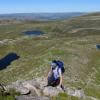

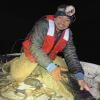



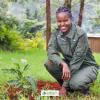













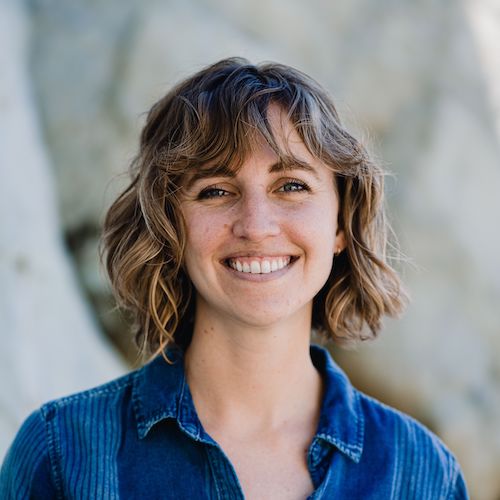







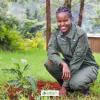










































11 August 2024 1:21am
That's a great question! I don't have any answers but my first thought was that the detection part of the problem looks very different when you're looking for plants vs animals (no camera traps, audio recorders, etc.) and often quite hard, as you're having to discriminate species that may be difficult to identify even in hand.
I'd love to hear more from people who are working on this!